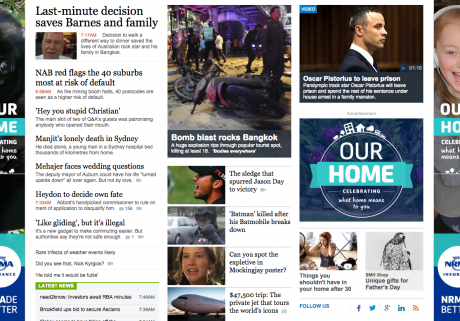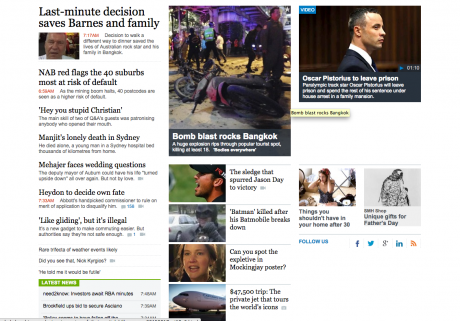Emerging Technology in Advertising, Mobile Optimisation, Product Management
It seems that ad blockers are getting more and more air time these days, with many in the digital media industry confused about just what they mean for your business. We’ve taken a look and have given the basic facts on what you need to know if your online business is ad-funded.What are ad blockers?
Ad Blockers are a software tool that users can download and install to run on their browser (on any device) which will prevent your ads from showing. They can be downloaded for free, or users can opt to pay for a more premium version. Some run on an open-source honour system, requesting that users pay what they think is fair. Typically, they block any ads from being shown on a page, for example on smh.com.au:
With ads:

Without ads:

For the end user, they get a much clearer reading experience and, one would argue, a slightly faster load time.
What is the usage of ad blocking software?
As with any product, there are always early adopters and usually they fall into the categories of adult entertainment, gaming and tech. So if your business falls into one of those categories, it’s time to start coming up with a backup plan. There are 144 million ad blocker users worldwide, which is growing at a rate of 70% year on year. As it grows, your potential revenue pool shrinks – so it’s time to act now. Usage is highest amongst those between 18-29 and skews towards the male demographic.
Who are the companies who are building ad blockers?
There are a good few options out there for users: Ad Blocker Plus, uBlock, AdGuard, Fair Blocker but contrary to popular belief this isn’t something being done only by the little guys. Apple’s next iOS release (iOS9) will make ad blocking a reality for web developers, allowing them to create extensions to prevent ads from loading and block cookies amongst other things. All of which goes hand in hand with some improvements they’re making to their News app (a similar idea to Flipboard), where they are encouraging digital publishers to provide their content and opt-in to iAd (Apple’s ad serving software). So when ad blocking goes mainstream on iOS, the only way to monetize digital content through ads will be through Apple’s own ecosystem.
Where does all this sit legally?
Coming after the business model of a company is nothing new and the internet has transformed the business model of many a company – you only have to look at the music industry to see that. Some ad blocking companies maintain a whitelist which insists that:
- Ads are easily identifiable
- Ads are non-intrusive to the user experience
- Ads must be appropriate for the site that they are being served on
What are your options to defend your business revenue?
It’s clear customers have had enough of intrusive pop-ups, overlays and interstitials. At a time when the other buzzword in the industry is viewability, how do you make sure your advertiser clients get their ad seen by your users without hampering the site experience? Native content is one way to go. Rather than having advertising that doesn’t relate to your users, have the kind that is meaningful and useful for them. Just make sure not to ad serve it – otherwise, it’ll get blocked in the process!
